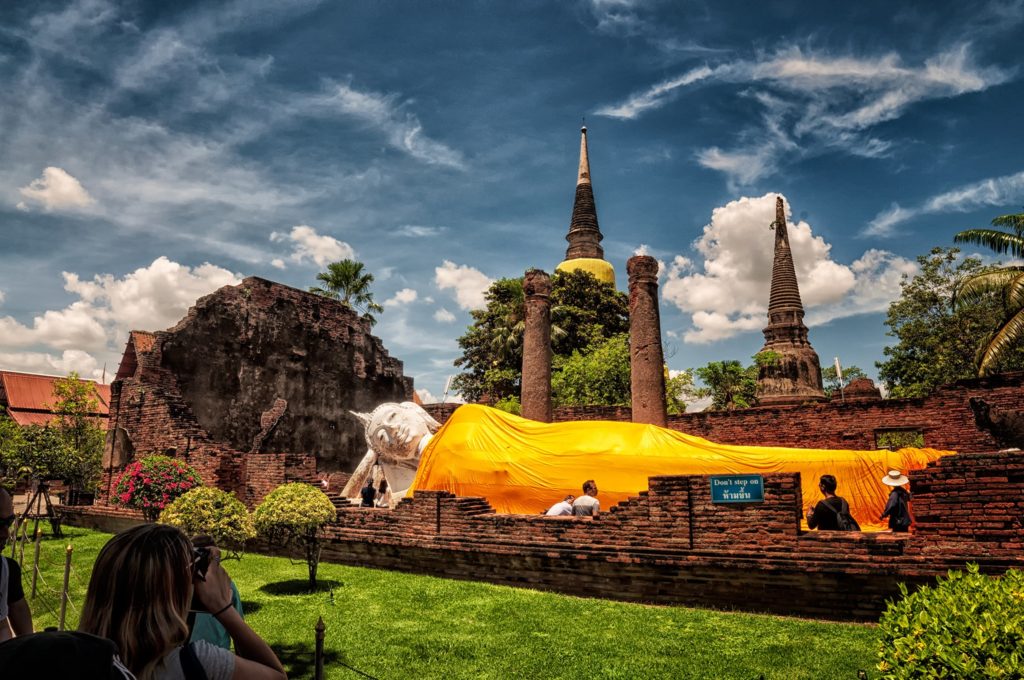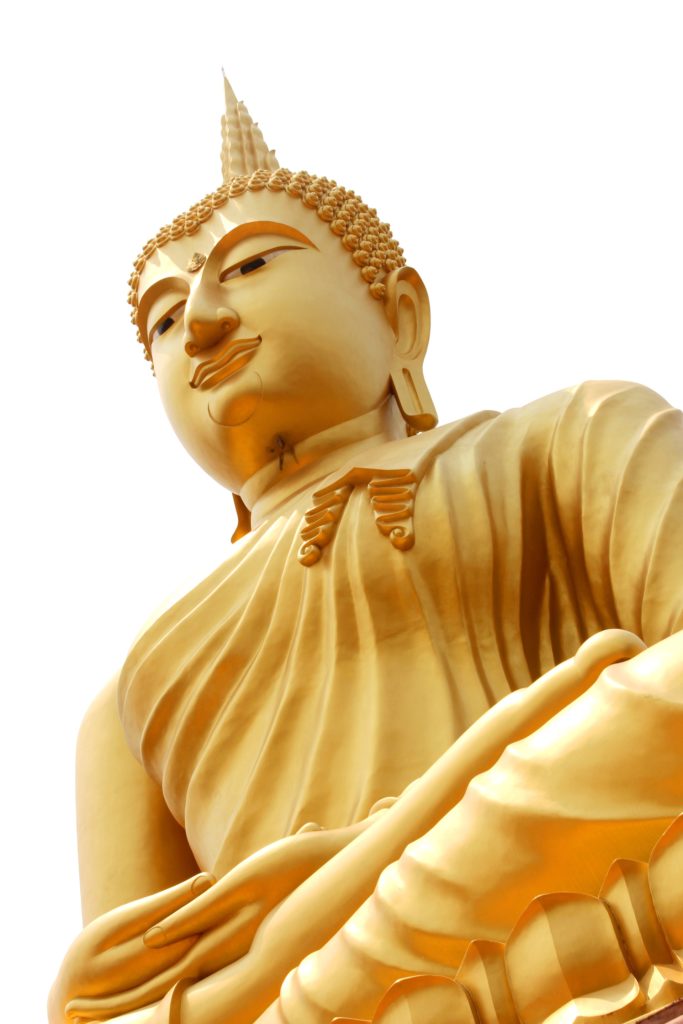
Buddhism may have spread only slowly in India until the time of the Mauryan emperor Ashoka, who was a public supporter of the religion. The support of Aśoka and his descendants led to the construction of more stūpas (Buddhist religious memorials) and to its spread throughout the Maurya empire and into neighboring lands such as Central Asia and to the island of Sri Lanka. These two missions, in opposite directions, would ultimately lead, in the first case to the spread of Buddhism into China, Korea, and Japan, and in the second case, to the emergence of Sinhalese Theravāda Buddhism and its spread from Sri Lanka to much of Southeast Asia.
This period marks the first known spread of Buddhism beyond India. According to the edicts of Aśoka, emissaries were sent to various countries west of India to spread Buddhism (Dharma), particularly in eastern provinces of the neighboring Seleucid Empire, and even farther to Hellenistic kingdoms of the Mediterranean. It is a matter of disagreement among scholars whether or not these emissaries were accompanied by Buddhist missionaries.
In central and west Asia, Buddhist influence grew, through Greek-speaking Buddhist monarchs and ancient Asian trade routes. An example of this is evidenced in Chinese and Pali Buddhist records, such as Milindapanha and the Greco-Buddhist art of Gandhāra. The Milindapanha describes a conversation between a Buddhist monk and the 2nd-century BCE Greek king Menander, after which Menander abdicates and himself goes into monastic life in the pursuit of nirvana. Some scholars have questioned the Milindapanha version, expressing doubts about whether Menander was Buddhist or just favorably disposed to Buddhist monks.
The Kushans (mid 1st–3rd century CE) came to control the Silk Road trade through Central and South Asia, which brought them to interact with ancient Buddhist monasteries and societies involved in trade in these regions. They patronized Buddhist institutions, and Buddhist monastery influence, in turn, expanded into a world religion, according to Xinru Liu. Buddhism spread to Khotan and China, eventually to other parts of the far east.
Some of the earliest written documents of the Buddhist faith are the Gandharan Buddhist texts, dating from about the 1st century CE, and connected to the Dharmaguptaka school. These texts are written in the Kharosthi script, a script that was predominantly used in the Greco-Bactrian and Indo-Greek kingdoms of northern India and that played a prominent role in the coinage and inscriptions of their kings.
The Islamic conquest of the Iranian Plateau in the 7th-century, followed by the Muslim conquests of Afghanistan and the later establishment of the Ghaznavid kingdom with Islam as the state religion in Central Asia between the 10th- and 12th-century led to the decline and disappearance of Buddhism from most of these regions.

To East and Southeast Asia
The Silk Road transmission of Buddhism to China is most commonly thought to have started in the late 2nd or the 1st century CE, though the literary sources are all open to question. The first documented translation efforts by foreign Buddhist monks in China were in the 2nd century CE, probably as a consequence of the expansion of the Kushan Empire into the Chinese territory of the Tarim Basin.
The first documented Buddhist texts translated into Chinese are those of the Parthian An Shigao. The first known Mahāyāna scriptural texts are translations into Chinese by the Kushan monk Lokakṣema in Luoyang, between 178 and 189 CE. From China, Buddhism was introduced into its neighbors Korea (4th century), Japan (6th–7th centuries), and Vietnam (c. 1st–2nd centuries).
During the Chinese Tang dynasty (618–907), Chinese Esoteric Buddhism was introduced from India and Chan Buddhism (Zen) became a major religion. Chan continued to grow in the Song dynasty (960–1279) and it was during this era that it strongly influenced Korean Buddhism and Japanese Buddhism. Pure Land Buddhism also became popular during this period and was often practiced together with Chan. It was also during the Song that the entire Chinese canon was printed using over 130,000 wooden printing blocks.
During the Indian period of Esoteric Buddhism (from the 8th century onwards), Buddhism spread from India to Tibet and Mongolia. Johannes Bronkhorst states that the esoteric form was attractive because it allowed both a secluded monastic community as well as the social rites and rituals important to laypersons and to kings for the maintenance of a political state during succession and wars to resist invasion. During the Middle Ages, Buddhism slowly declined in India, while it vanished from Persia and Central Asia as Islam became the state religion.

The Theravada school arrived in Sri Lanka sometime in the 3rd century BCE. Sri Lanka became a base for its later spread to southeast Asia after the 5th century CE (Myanmar, Malaysia, Indonesia, Thailand, Cambodia, and coastal Vietnam). Theravada Buddhism was the dominant religion in Burma during the Mon Hanthawaddy Kingdom (1287–1552). It also became dominant in the Khmer Empire during the 13th and 14th centuries and in the Thai Sukhothai Kingdom during the reign of Ram Khamhaeng (1237/1247–1298).
